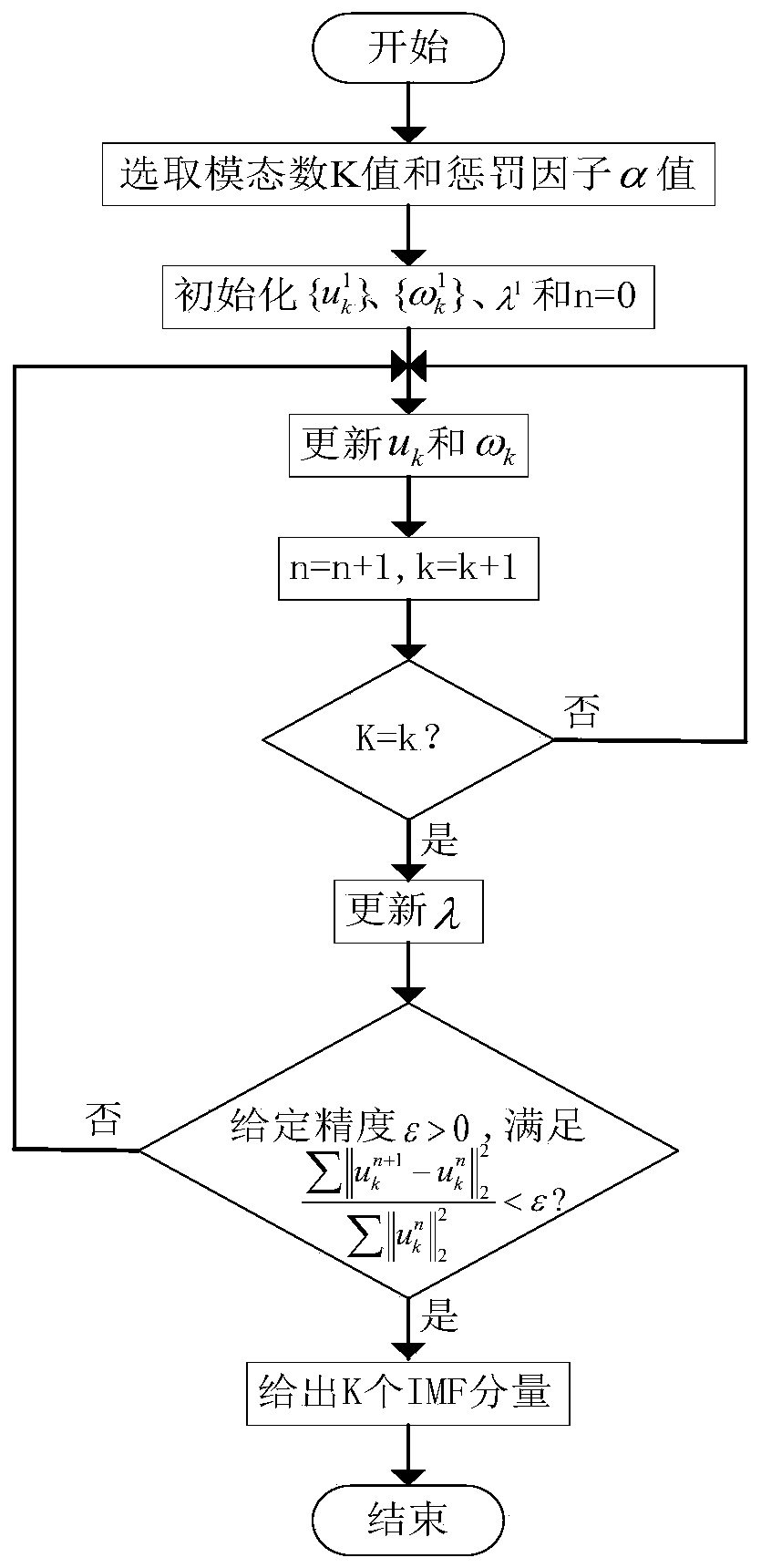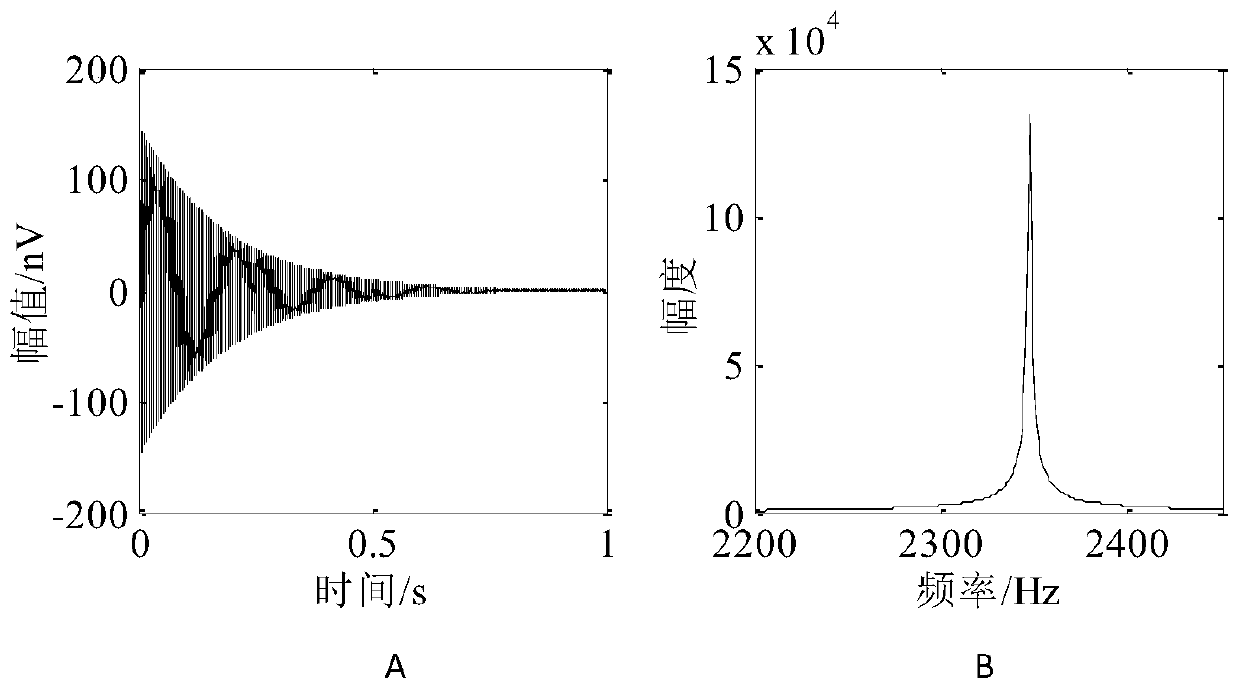Magnetic resonance sounding signal noise filtering method based on variational mode decomposition
A variational modal decomposition and signal-to-noise technology, applied in geophysical measurements, instruments, etc., to expand the scope of application, improve anti-interference ability, and improve time-frequency resolution
- Summary
- Abstract
- Description
- Claims
- Application Information
AI Technical Summary
Problems solved by technology
Method used
Image
Examples
Embodiment 1
[0070] This embodiment is a simulation experiment of the method of the present invention carried out under the MATLAB 7.0 programming environment.
[0071] Simulation algorithm for noise filtering method of magnetic resonance sounding signal based on variational mode decomposition, refer to figure 1 , including the following steps:
[0072] Step (1): Use the formula Construct a Larmor frequency of 2347Hz and an amplitude of e 0 150nV, the relaxation time For an ideal MRS signal of 180ms, such as image 3 shown in which, image 3 A is the time-amplitude diagram, image 3 B is the frequency-amplitude diagram. Add power frequency interference of 2250Hz, 2300Hz, 2350Hz and 2400Hz near the Larmor frequency of the signal and random noise with an intensity of -5dB to form an observed MRS signal x(t)( is a row vector), such as Figure 4 as shown, Figure 4 A is the time-amplitude diagram, Figure 4 B is the frequency-amplitude diagram;
[0073] Step (2): carry out VMD alg...
Embodiment 2
[0078] In this embodiment, the MRS signal collected on the spot in Changchun Cultural Square is used as the processing object of the method of the present invention.
[0079] Noise filtering method for magnetic resonance sounding signal based on variational mode decomposition, refer to figure 1 , including the following steps:
[0080] Step 1: For a set of observed MRS signals X(t) collected by the magnetic resonance sounding (MRS) water detector, such as Figure 9 as shown, Figure 9 A is the MRS signal spectrum, Figure 9 B is the spectrum, and its signal-to-noise ratio is calculated as -8.35dB. It is preprocessed by band-pass filtering to obtain the noisy MRS signal x(t) (row vector) within the target frequency band, and its signal-to-noise ratio is calculated. SNR = 11.41dB;
[0081] Step 2: Perform Fourier transform on the observed signal x(t) after bandpass filtering to obtain its spectrum, such as Figure 10 as shown, Figure 10 A is the MRS signal spectrum, Fig...
PUM
 Login to View More
Login to View More Abstract
Description
Claims
Application Information
 Login to View More
Login to View More - R&D
- Intellectual Property
- Life Sciences
- Materials
- Tech Scout
- Unparalleled Data Quality
- Higher Quality Content
- 60% Fewer Hallucinations
Browse by: Latest US Patents, China's latest patents, Technical Efficacy Thesaurus, Application Domain, Technology Topic, Popular Technical Reports.
© 2025 PatSnap. All rights reserved.Legal|Privacy policy|Modern Slavery Act Transparency Statement|Sitemap|About US| Contact US: help@patsnap.com



